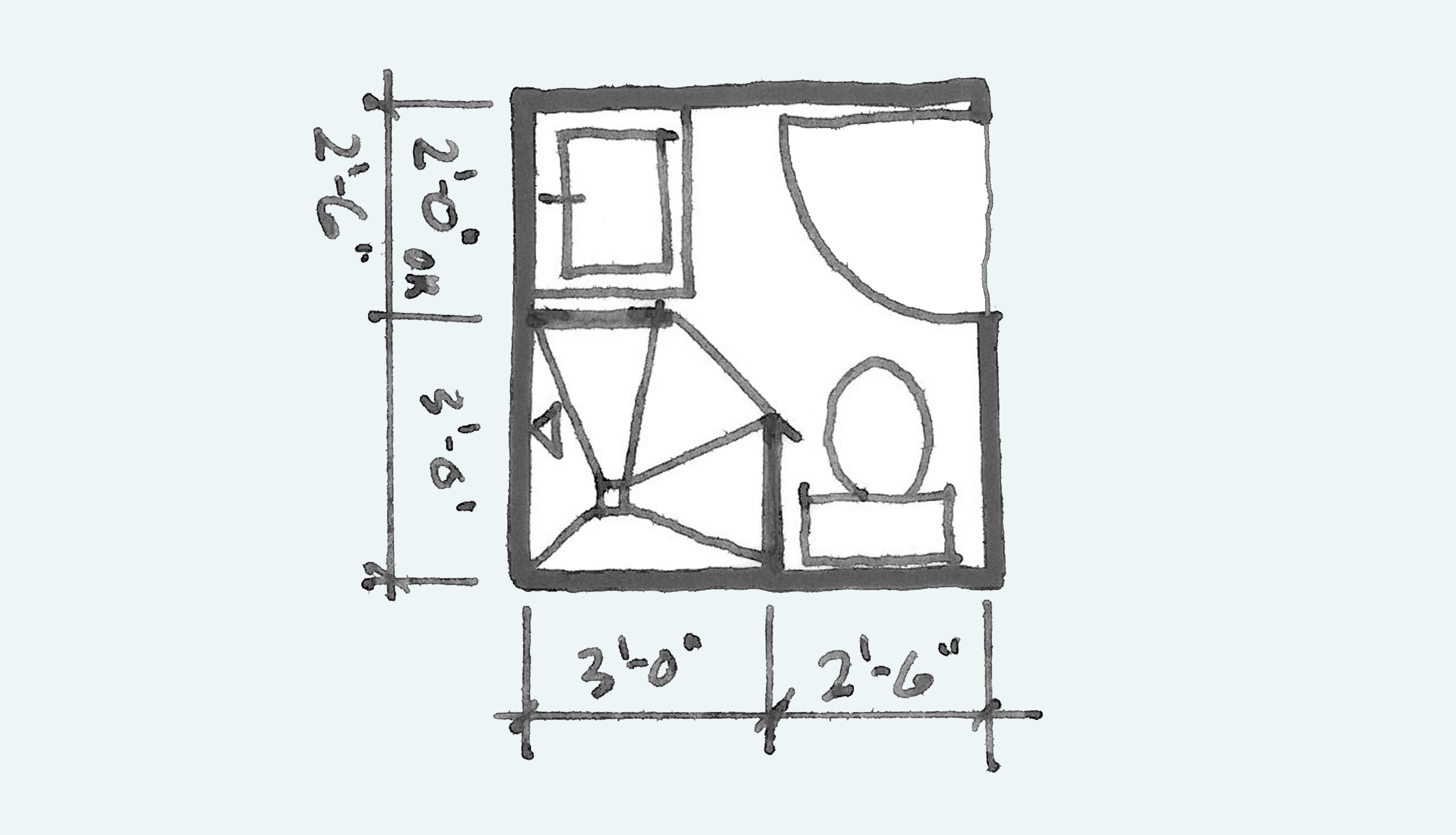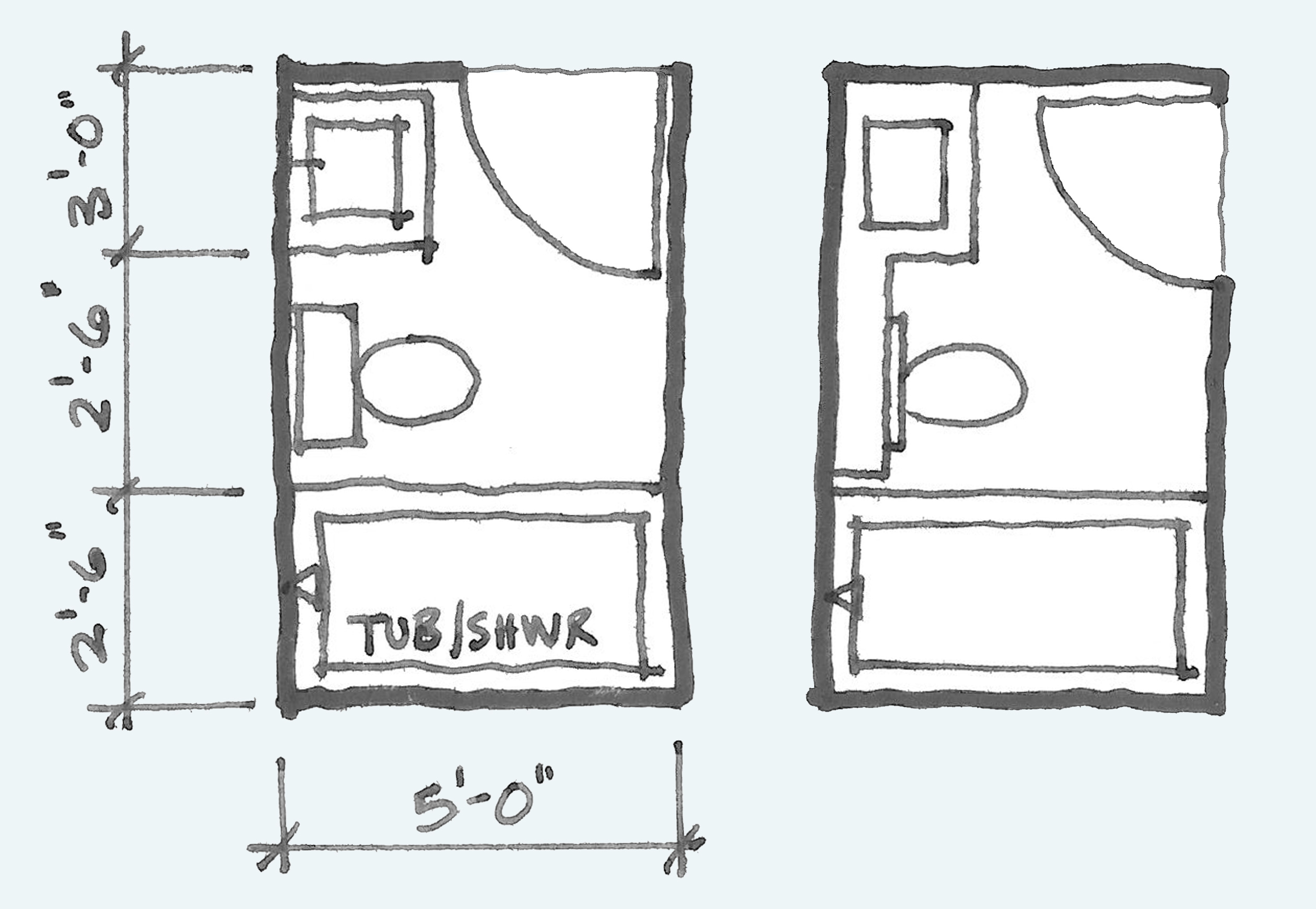Maximizing Space in a 7ft x 5ft Bathroom: 7ft By 5ft Bathroom Design

Transforming a compact 7ft x 5ft bathroom into a functional and visually appealing space requires careful planning and creative solutions. The limited square footage presents unique challenges, but with strategic design choices, you can maximize space and create a bathroom that feels both comfortable and efficient.
Creating an Illusion of Spaciousness
The key to making a small bathroom feel larger lies in creating an illusion of space. This can be achieved through the strategic use of color, mirrors, and vertical storage.
- Light Colors: Light colors, such as white, cream, and pale blues, reflect light and make the space feel more expansive. Using a light color palette on the walls, ceiling, and even the floor can create a sense of openness.
- Mirrors: Mirrors are a powerful tool for creating the illusion of space. Placing a large mirror on a wall opposite a window can reflect light and make the room appear twice as large. Additionally, using mirrors to reflect natural light from a window can further brighten the space.
- Vertical Storage: Maximizing vertical space is crucial in a small bathroom. Utilize tall cabinets, shelves, and storage solutions to keep items off the floor and create a sense of spaciousness.
Space-Saving Bathroom Fixtures and Furniture
Choosing space-saving fixtures and furniture is essential for optimizing a small bathroom.
- Corner Sinks: Corner sinks are a great way to save space in a small bathroom. They fit snugly in a corner, freeing up valuable floor space.
- Wall-Mounted Toilets: Wall-mounted toilets offer a sleek and modern look while also saving floor space. The tank is concealed within the wall, leaving more room for movement and creating a more spacious feel.
- Compact Shower Stalls: Compact shower stalls are available in various sizes and designs, making them a great option for small bathrooms. They typically have a smaller footprint than traditional bathtubs, maximizing floor space.
Bathroom Layout Plan, 7ft by 5ft bathroom design
A well-designed layout plan is essential for maximizing space and functionality in a small bathroom.
- Toilet Placement: Place the toilet against a wall, maximizing space and creating a more spacious feel. Consider a wall-mounted toilet for additional space savings.
- Sink Placement: A corner sink is an ideal choice for a small bathroom. Alternatively, consider a wall-mounted sink, which can free up floor space.
- Shower Placement: Place the shower stall in a corner to minimize its footprint. A compact shower stall can provide ample space for showering while maximizing space.
- Storage Solutions: Utilize vertical storage solutions, such as tall cabinets, shelves, and medicine cabinets, to keep items off the floor and maximize space.
Creating a Stylish and Functional Bathroom Design
A well-designed bathroom is more than just a place to wash up; it’s a sanctuary where you can relax and rejuvenate. Creating a stylish and functional bathroom in a limited space requires careful planning and a cohesive design approach. A well-defined theme can unify the look and feel of your bathroom, transforming it into a space that reflects your personal style and enhances your daily routine.
Choosing a Bathroom Design Style
Selecting a bathroom design style is the first step in creating a cohesive and inviting space. It sets the tone for the overall aesthetic and influences the choices you make for colors, materials, and fixtures. Here are some popular bathroom design styles:
- Minimalist: Minimalist bathrooms prioritize simplicity and functionality. They feature clean lines, neutral color palettes, and minimal ornamentation. The focus is on creating a sense of calm and spaciousness. A minimalist bathroom might incorporate sleek, modern fixtures, natural materials like wood and stone, and a limited number of decorative elements.
- Modern: Modern bathrooms embrace contemporary design elements, often featuring bold geometric shapes, sleek lines, and a focus on functionality. They frequently incorporate materials like chrome, glass, and polished concrete, creating a sophisticated and minimalist aesthetic.
- Traditional: Traditional bathrooms evoke a sense of classic elegance and comfort. They often feature ornate details, such as crown molding, decorative tiles, and vintage-inspired fixtures. Warm, inviting colors like cream, beige, and soft blues are common, creating a cozy and timeless atmosphere.
- Eclectic: Eclectic bathrooms combine elements from various design styles, creating a unique and personalized look. They might feature a mix of textures, patterns, and colors, creating a visually stimulating and interesting space. An eclectic bathroom could incorporate vintage finds, bold artwork, and unexpected materials to create a one-of-a-kind aesthetic.
Selecting a Color Palette
Once you’ve chosen a design style, you can start selecting a color palette that complements it. Color plays a crucial role in setting the mood and ambiance of your bathroom.
- Neutral Colors: Neutral colors like white, gray, and beige are versatile and create a sense of calm and spaciousness. They are particularly suitable for smaller bathrooms as they help to reflect light and make the space feel larger. Neutral colors provide a blank canvas for adding pops of color through accessories and artwork.
- Bold Colors: Bold colors like navy, emerald green, or terracotta can add drama and personality to a bathroom. However, it’s important to use them strategically to avoid overwhelming the space. Consider using a bold color on a single wall as an accent or incorporating it through accessories and towels.
- Warm Colors: Warm colors like yellow, orange, and red can create a sense of energy and vibrancy. They can be used to create a welcoming and inviting atmosphere, especially in a smaller bathroom where natural light may be limited.
- Cool Colors: Cool colors like blue, green, and purple can create a sense of tranquility and relaxation. They are often used in bathrooms to evoke a spa-like atmosphere. Cool colors can also help to visually expand a small space.
Choosing Materials and Fixtures
The materials and fixtures you choose will significantly impact the overall look and feel of your bathroom. Consider the following factors:
- Durability: Bathroom materials must be durable and resistant to moisture and wear. Choose materials that are easy to clean and maintain, such as porcelain tile, natural stone, or acrylic.
- Aesthetics: The materials and fixtures should complement the chosen design style. For example, a minimalist bathroom might feature sleek chrome fixtures and natural stone tiles, while a traditional bathroom could incorporate brass fixtures and ornate tile patterns.
- Functionality: Consider the functionality of the fixtures and materials. Choose a showerhead that provides a comfortable spray, a vanity with ample storage, and a toilet that is efficient and easy to clean.
Incorporating Decorative Elements
Decorative elements can add personality and style to your bathroom. Consider the following:
- Artwork: Artwork can add a touch of personality and create a focal point in your bathroom. Choose artwork that complements the chosen design style and your personal taste.
- Plants: Plants can bring life and freshness to a bathroom. Choose low-maintenance plants that thrive in humid environments, such as ferns, orchids, or peace lilies.
- Towels: Towels can add a pop of color and texture to your bathroom. Choose towels that are soft, absorbent, and complement the color palette.
- Storage Solutions: Storage solutions are essential for keeping a small bathroom organized and clutter-free. Consider using shelves, baskets, and organizers to maximize storage space.
Essential Considerations for a 7ft x 5ft Bathroom

Transforming a compact 7ft x 5ft bathroom into a functional and stylish haven requires careful planning and consideration of essential elements. By prioritizing ventilation, lighting, storage, and accessibility, you can maximize the space and create a comfortable and inviting sanctuary.
Ventilation and Lighting
Proper ventilation and lighting are crucial for a small bathroom, as they contribute to both functionality and aesthetics. Adequate ventilation prevents moisture buildup, which can lead to mold and mildew growth, while proper lighting enhances the overall ambiance and visibility.
- Exhaust Fan: Install a powerful exhaust fan to remove moisture and odors, ensuring a fresh and healthy environment. Consider a fan with a humidity sensor that automatically activates when needed.
- Natural Light: Maximize natural light by incorporating a window, if possible. A skylight can also be a good option for smaller bathrooms.
- Artificial Lighting: Use a combination of ambient and task lighting. Ambient lighting, such as recessed lights or a ceiling fixture, provides overall illumination, while task lighting, such as vanity lights or sconces, focuses light on specific areas, like the mirror or sink.
Storage Solutions
Limited space necessitates efficient storage solutions to keep the bathroom organized and clutter-free. Maximizing vertical space and utilizing corners are key strategies for a small bathroom.
- Wall-Mounted Cabinets: Wall-mounted cabinets maximize floor space and offer ample storage for toiletries, towels, and other essentials. Consider using mirrored cabinet doors to create an illusion of more space.
- Floating Shelves: Floating shelves add visual interest and provide additional storage for decorative items, towels, or toiletries.
- Over-the-Toilet Storage: Utilize the space above the toilet with a dedicated storage unit or shelf to store items that are not frequently used.
- Towel Racks and Hooks: Install towel racks and hooks on walls or behind doors to keep towels organized and accessible.
Bathroom Fixtures
Selecting the right bathroom fixtures is essential for both functionality and style. Choose fixtures that are space-saving, durable, and aesthetically pleasing.
- Showerheads: Consider a rain showerhead for a luxurious feel or a handheld showerhead for added flexibility. Choose a showerhead with a low-flow design to conserve water.
- Faucets: Select faucets with a sleek and modern design. Consider touchless faucets for added convenience and hygiene.
- Lighting: Choose energy-efficient LED lighting for both practicality and sustainability. LED lights produce less heat and last longer than traditional incandescent bulbs.
Safety and Accessibility
Creating a safe and accessible bathroom environment is crucial for all users, especially for those with mobility limitations.
- Non-Slip Surfaces: Install non-slip flooring in the shower and tub area to prevent slips and falls. Choose tiles with a textured surface or a rubber mat.
- Grab Bars: Install grab bars near the toilet, shower, and tub to provide support and stability.
- Walk-In Shower: Consider a walk-in shower instead of a bathtub for easier access and reduced risk of falls.
